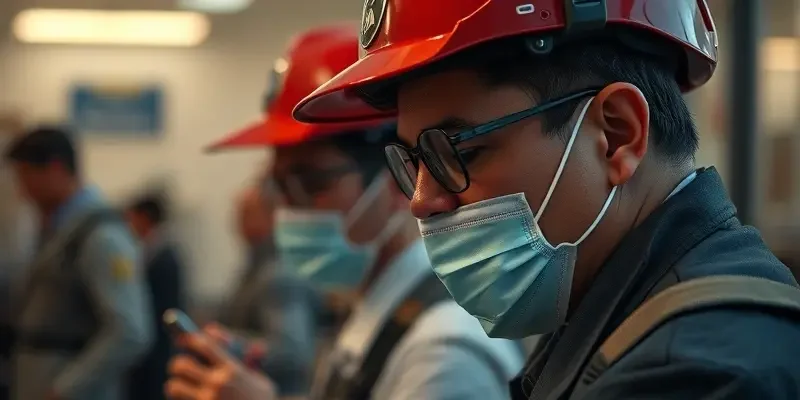The Role of Posture Corrector Devices in Recovery and Injury Prevention for Athletes
If you’ve ever nursed a sore back or noticed your shoulders rounding forward after a tough training block, you’re not alone. Postural problems aren’t just for desk warriors—athletes of all levels grapple with them, and improper alignment can slow recovery or even set the stage for new injuries. But are posture corrector devices the simple solution we hope for? Let’s break down what they do, when (and how) to use them, and how they fit into a smart recovery plan.
Understanding Posture Corrector Devices
Modern posture correctors come in a variety of styles, each designed to nudge your body toward better alignment:
- Posture Braces: These wearable supports gently pull your shoulders back and align your spine. Think of them as a training wheel for your upper body—particularly helpful right after an injury or surgery.
- Electronic Posture Trainers: These small, techy gadgets stick to your back or clip to clothing. When you slouch, they buzz or vibrate, reminding you to sit or stand tall. Many sync with apps, tracking progress over time.
- Orthopedic Posture Correctors: Heavy-duty braces prescribed after more serious injuries. They offer firmer support and are often used under medical supervision.
- Alternatives: Ergonomic chairs, supportive cushions, and even taping techniques provide added options—especially for athletes who log hours sitting (think cyclists or esports competitors).
How Can Posture Correctors Help During Recovery?
A well-chosen device can provide real, noticeable benefits, especially if you’re bouncing back from strain or injury:
1. Immediate Support and Pain Relief
By taking some of the workload off injured muscles, posture correctors can ease pain and help you move safely. For example, after a minor shoulder strain, wearing a brace for short periods can reduce fatigue while you heal.
2. Improved Alignment Means Fewer Setbacks
Proper posture keeps your body’s structures in balance—reducing stress on the neck, back, and shoulders. This lowers the risk of compensatory injuries, where fixing one problem causes another.
3. Building Awareness and New Habits
Devices with biofeedback (like vibrating sensors) “teach” you to recognize when you’re slouching. Over time, this improves body awareness—a skill that translates directly to sport-specific movements, from running posture to Olympic lifts.
Real-World Example
Adam, a competitive powerlifter, used a posture brace alongside physio after a shoulder injury. By combining short, scheduled brace use with targeted exercises, he avoided recurring pain and returned to personal-best lifts within months.
Best Practices: Getting the Most from Your Posture Device
Using a posture corrector the right way maximizes benefits and protects your progress:
- Short-Term Tool, Not a Crutch: Think of correctors as a temporary support—most experts recommend short daily use (30 minutes to 2 hours max), not all day.
- Pair with Movement Training: For lasting results, posture work should go hand-in-hand with exercises that strengthen your core, back, and shoulder stabilizers.
- Personalize Fit: Devices that are adjustable or custom-sized ensure comfort and effectiveness—especially important for athletes with unique training demands.
- Listen to Your Body: If a corrector causes discomfort, skin irritation, or muscle fatigue, adjust or consult a professional.
Warning: Over-reliance on passive support can lead to muscle atrophy, making you more vulnerable in the long run.
Enhanced Recovery: Go Beyond Devices
For a holistic recovery (and better long-term posture), supplement your device use with these strategies:
- Footwear: Invest in shoes with strong arch and heel support—good posture starts from the ground up.
- Training: Incorporate mobility drills and stretching targeting hips, shoulders, and thoracic spine.
- Manual Therapy: Use foam rollers, massages, or PT guidance to release tight muscles.
- Nutrition: Aim for a protein-rich, anti-inflammatory diet to power muscle repair.
- Mindset: Visualization and goal-setting boost motivation during the sometimes slow recovery process.
Conclusion: Balance is the Name of the Game
Posture corrector devices can be a valuable asset on your journey back from injury or as you strive to prevent the next setback. Use them wisely, as part of a comprehensive approach that includes physical therapy, smart training, and a mindful lifestyle. If you’re curious whether a posture device could help your recovery, consult a sports health professional—or take a moment today to check your posture. Your future self will thank you.
Ready to move stronger, stand taller, and recover smarter? Your body (and your next PR) deserve it.

